Interesting Crackpots Vol. 2: Alfred Lawson, Father of Lawsonomy
 Audrey Nowakowski via Wikipedia Commons
Audrey Nowakowski via Wikipedia Commons
Alfred Lawson seemed a natural follow up to Wilhelm Reich. They’re very much two peas in a pod despite never having met, to my knowledge. Both were celebrated figures of some accomplishment in their respective fields before they lost their minds.
Both developed their own “theory of everything” despite being scientific novices, and dedicated the remainder of their lives to advancing it against an apathetic, sometimes hostile scientific community. This would seem to be its own entire genre of dude, there’s a lot of these and after you study enough of them, they start blurring together.
Alfred Lawson was something of a renaissance man, wearing many different hats during his life. Born on March 24, 1869 Alfred took an early interest in baseball, which culminated in a short career as a player for the Boston Beaneaters and the Pittsburgh Alleghenys until 1895. Between 1905 and 1907, he tried his hand at managing a team instead.
One year later he’d start his own league, apparently not content to manage a single team. Lawson’s Union Professional League lasted only a month before running out of money. Baseball, it seemed to Lawson, was not his true calling.

Alfred Lawson via Wikipedia Commons
This time his intuition was spot on. He made a far bigger mark on the world of aviation than he ever did in baseball, credited with starting the world’s first airline. This was another of Alfred’s fascinations from his youth, which turned out to be his only constructive legacy.
Alfred published his own aviation magazine starting in 1908, titled “Fly”, selling each copy for ten cents. Eventually he moved to New York and renamed the magazine “Aviation”, continuing to publish it for a further six years. It was in this magazine that Alfred himself coined the term “airline”.
Besides being a tireless evangelist for aviation technology and the commercialization thereof, he was also an early and ardent promoter of the air force. He would lobby congress in 1913 to expand the military’s fleet of aircraft, another example of apparent prescience on Lawson’s part, as WW1 began the very next year.
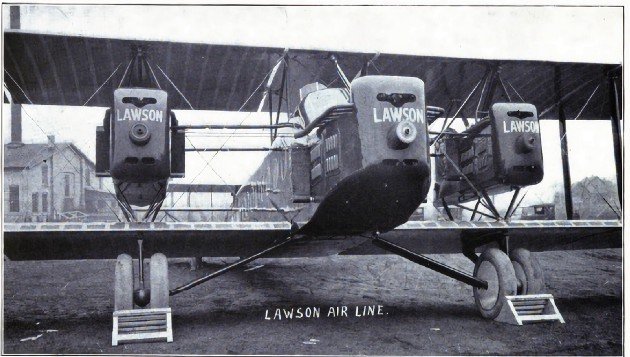
Alfred Lawson via Wikipedia Commons
It wasn’t until 1919, following the war, that Alfred got serious about commercializing air travel for the masses. He was by this time already an accomplished pilot, regularly commuting by air in a personal amphibious plane from his home in New Jersey to his offices in New York.
During the prior two years, Lawson had established the Lawson Aircraft Corporation and completed the construction of its first plant in Wisconsin. This is where he built his training aircraft, the Lawson MT-2, laying the last of the groundwork for the world’s first airline.
Once everything was permitted and operational, Lawson built the T2, an 18 seater passenger plane that would include many firsts for air travel, besides the crew capacity. The T2, for example, was the first passenger plane with the equipment onboard to show in-flight movies from a reel to reel projector.
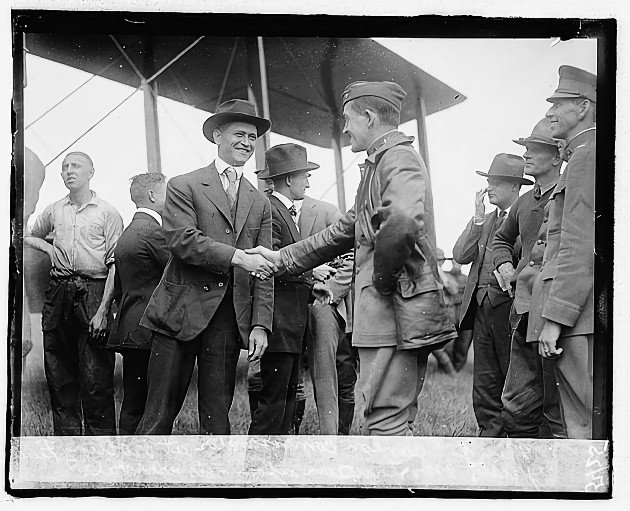
Unknown Author, Public Domain via Wikipedia Commons
Successful demonstration flights of the T2 secured Lawson $1 million in venture capital to build the 26 seater Midnight Liner in 1920…which crashed on takeoff the first time it was used. Undaunted, he went even bigger with the 56 seat, two story Lawson Super Airliner. A man after Howard Hugh’s own heart! This one did enter use without incident.
It wasn’t all sunshine and lollipops for Lawson during this stage of his career, however. His plan to establish three air mail routes and build ten war planes for the government fell through the same year as the Midnight Liner’s crash. The recession forced Lawson to decline these lucrative contracts, two back-to-back disasters which led him to consider other fields he might expand into that were less financially risky.
Even during the height of his career as an early aviation tycoon, Lawson started showing warning signs. He was an ardent believer in a raw, vegetarian diet as well as other dubious health practices, claiming a combination of the two would make possible an average lifespan of 200.
It didn’t raise any eyebrows as yet because Lawson was sort of the Elon Musk of his day. He was tackling very difficult problems like making aviation safe and routine, knocking it out of the park. He was so widely admired that most people gave him the benefit of the doubt, figuring Lawson must know better than they did even when he made nutty sounding claims .
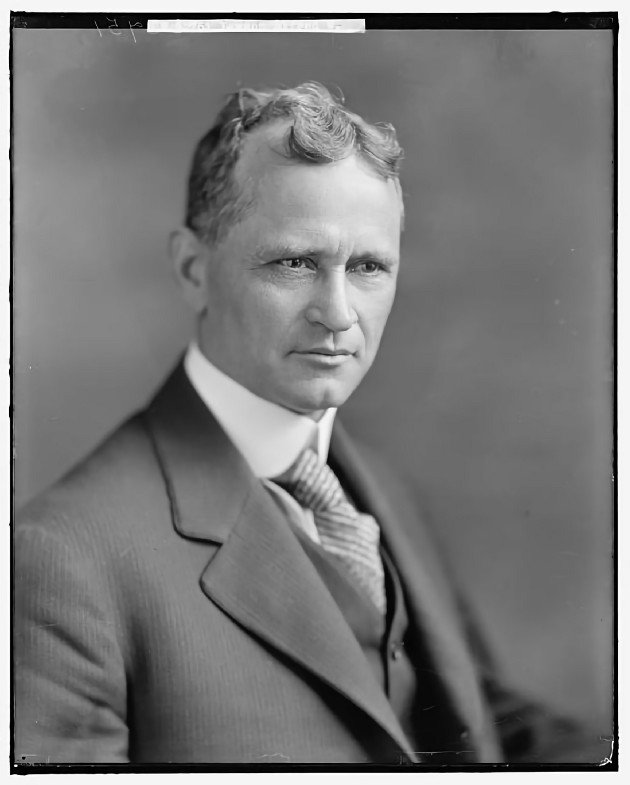
Harris & Ewing via Wikipedia Commons
It also didn’t hurt that Lawson was an attractive man by the standards of the day, and a charismatic speaker. Those two qualities will get you surprisingly far, even if what you’re peddling is snake oil. Lawson was, instead, doing the impossible and turning a tidy profit. At least with respect to engineering and business, he seemed to have all the answers.
Evidently he agreed with the adoring public’s impression of him. His claims concerning his own brilliance grew more and more over the top during this time, and he became fond of referring to himself in the third person. This is the stage of his life where everything started to go off the rails. He consolidated his ideas about health, the human body and philosophy into “Lawsonomy” and promoted it as both a philosophy of health and a new religion.
He dabbled in economics as well, propounding his theory of Direct Credits during the Great Depression, which fingered banks and “the one percent” as the source of all economic woes. In his estimation, the government ought to replace banks as the provider of loans. Even a stopped clock is right twice a day, it would seem.
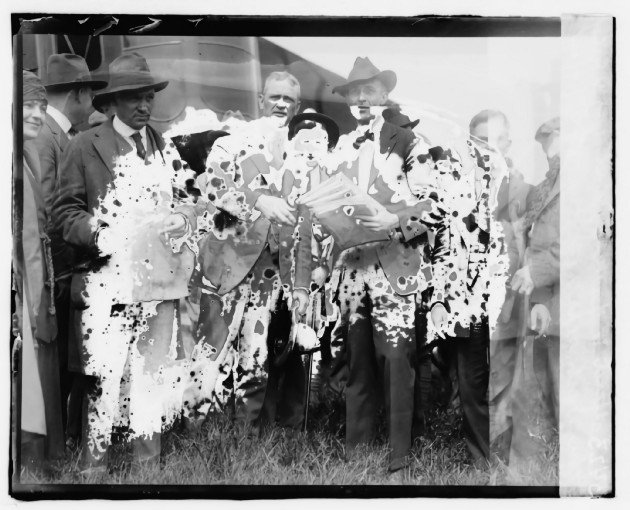
National Photo Company Collection via Wikipedia Commons
Lawson had accumulated lots of professional and social capital by this time. This momentum continued to carry him forward even as his outlook grew increasingly unhinged. During the late 30s he published The Lawsonian Trilogy, his magnum opus, in which he postulated that he was one of the rare geniuses who appear every two thousand years to lead humankind closer to the one true God.
It was a not-so-subtle comparison of himself to Jesus, which didn’t escape the public’s notice. Although lectures were packed early on, after the trilogy was published, attendance dwindled. People were beginning to pick up on the fact that not all was well behind Alfred Lawson’s eyes.
Lawsonomy held, among other teachings, that all functions of the human body (and all other living organisms) boiled down to fundamental forces which Alfred Lawson named Suction and Pressure, Zig-Zag and Swirl, and Penetrability. The interactions of these forces accounted not only for biological processes, but moral dynamics and the workings of the universe itself.
These writings were full of shibboleths, terminology coined by Lawson himself with no meaning outside of Lawsonomy, such as ‘Menorgs’ and ‘Disorgs’, ‘Equaeverpoise’, and ‘Lesether’. Never was there any shred of proof for any of his metaphysical claims of course, which is why he chose to present it as spiritual teachings rather than science, a strategy L. Ron Hubbard would later make use of too.
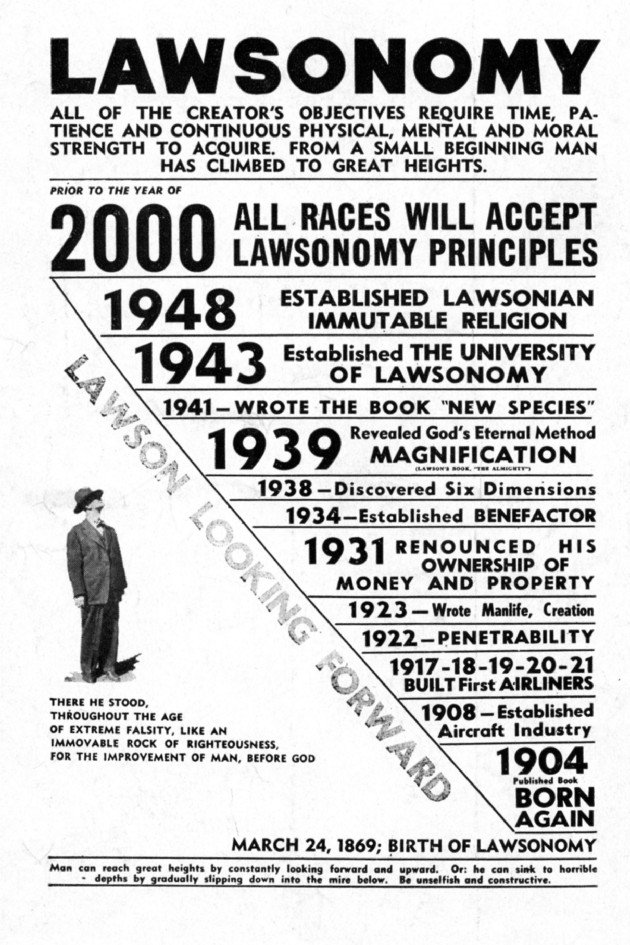
Alfred Lawson via Wikipedia Commons
Other Lawsonian beliefs include the existence of six dimensions (physicists now say there are 10), reincarnation, and therapeutic exercises which bear a suspicious resemblance to Dianetics, which was under development by L. Ron Hubbard around that same time. Despite this, to my knowledge there exists no record of the two ever having met, nor citing one another’s writings as an influence.
In 1943 Lawson founded the Humanity Benefactor Foundation from which he, Alfred Lawson, God’s literal gift to humanity, might disseminate his teachings. He still at this stage believed Lawsonian religion would be universally adopted “once a majority understands it”. He also founded the University of Lawsonomy in Des Moines, offering thirty year(!) programs which culminated in a “Knowledgian” degree. I wonder if the credits were transferable?
As happened with Wilhelm Reich, what brought Lawson’s ego train to an abrupt halt was the government taking notice of certain illegal activities. Both men continued plowing ahead with their big plans, deluded to the point where it didn’t even occur to either that laws still applied to them. In Lawson’s case, his foundation was investigated by the IRS for buying up surplus war machines and selling them for a profit.

Standard Aircraft Corp via Wikipedia Commons
Lawson had evidently used connections from his days of government contracting and buying up war surplus planes as the basis of his aviation business to run a discreet side hustle selling some of these vehicles to private buyers within the US. A big no-no for a non-profit, which a shrewd businessman like Lawson must assuredly have known.
This resulted in the delusional Alfred Lawson being brought before a US Senate Investigative Committee where instead of protesting his innocence or seeking a plea deal, he instead used his time before the senators to explain Lawsonian religion to them. They reacted with a mixture of amusement and irritation.
You’ll recall something similar happened to Wilhelm Reich when the government got ahold of him. Guys like this are so convinced by their own prior successes that their ideas are indisputably brilliant, they believe if they simply explain those ideas to the government (or anybody else), it will win them over to the cause.
Many churches teach something similar: That the word of God has such inherent power, if you simply recite scripture to heathens, it will work its magic on their hearts and they’ll turn to Jesus on the spot. Anybody who has ever attempted this feat knows how well it works. It did not avail Alfred Lawson, certainly.

Audrey Nowakowski via Wikipedia Commons
Alfred Lawson died just two years after the investigation. Not much is left of Lawsonomy now. A farm in Wisconsin is the only Lawsonomic University left in the world that’s still operating, in case you want to spend your life savings to become a “Knowledgian”. A few Lawsonian churches are also rumored to still be in use around the flyover states.
The huge “University of Lawsonomy” sign seen above was a well known landmark visible from I-94, remaining as seen in the image until the text was changed to the URL of the Lawsonomy website (now defunct). A storm destroyed the sign in 2009, sadly. On the Northbound side of I-94 you could see a barn with text reading “Study Natural Law” on the roof until it was shingled over in 2014.
Today the church claims ‘hundreds’ of members, which may be a generous estimate. The remaining members are all elderly, all of their kids opted out, and Lawsonomy appears destined for near term extinction. An ignominious end for a philosophy that was supposed to be embraced by everyone as of the year 2000.
Hello Alex...nice seeing you around these parts. How have you been? I used to enjoy your fiction novels back in the day... Maybe we'd see some of those sometime in the future?
Perhaps, but I'm publishing my work properly now. Often publishers require I not post it for free online
Lol.
Wonder if Rick and Morty drew their inspiration from those.
If you are going to post about "Interesting Crackpots" on the internet you need to post about the internet's OG crackpot Alex Chiu.
Oh I'll get to him eventually. Though generally I prefer to focus on guys who had some sort of following or tried to advance an ambitious "theory of everything" to an unreceptive world.
O.K. Also don't forget about John Worrell Keely.
Oh fascinating, an early securities fraud/investment scam! Usually when guys do this, it's a perpetual motion machine of some sort like the "permanent free energy magnetic motor" but the "vaporic motor/Keely Engine" has a certain steampunk ring to it
It's amazing to me that his Lawsonomy had the staying power to keep it going into this century. The Orgone thing makes some sense, but this?
The comparisons to Scientology are interesting. To put it in a modern lens, the people following this instead of getting roped into that scam are like whackjob cult hipsters who would scoff at how popular and mainstream the other is.
Yeah in many ways it was kind of the proto-Scientology. It showed there existed an appetite for such a thing but it had to wait for L. Ron to come along and get the formula just right.